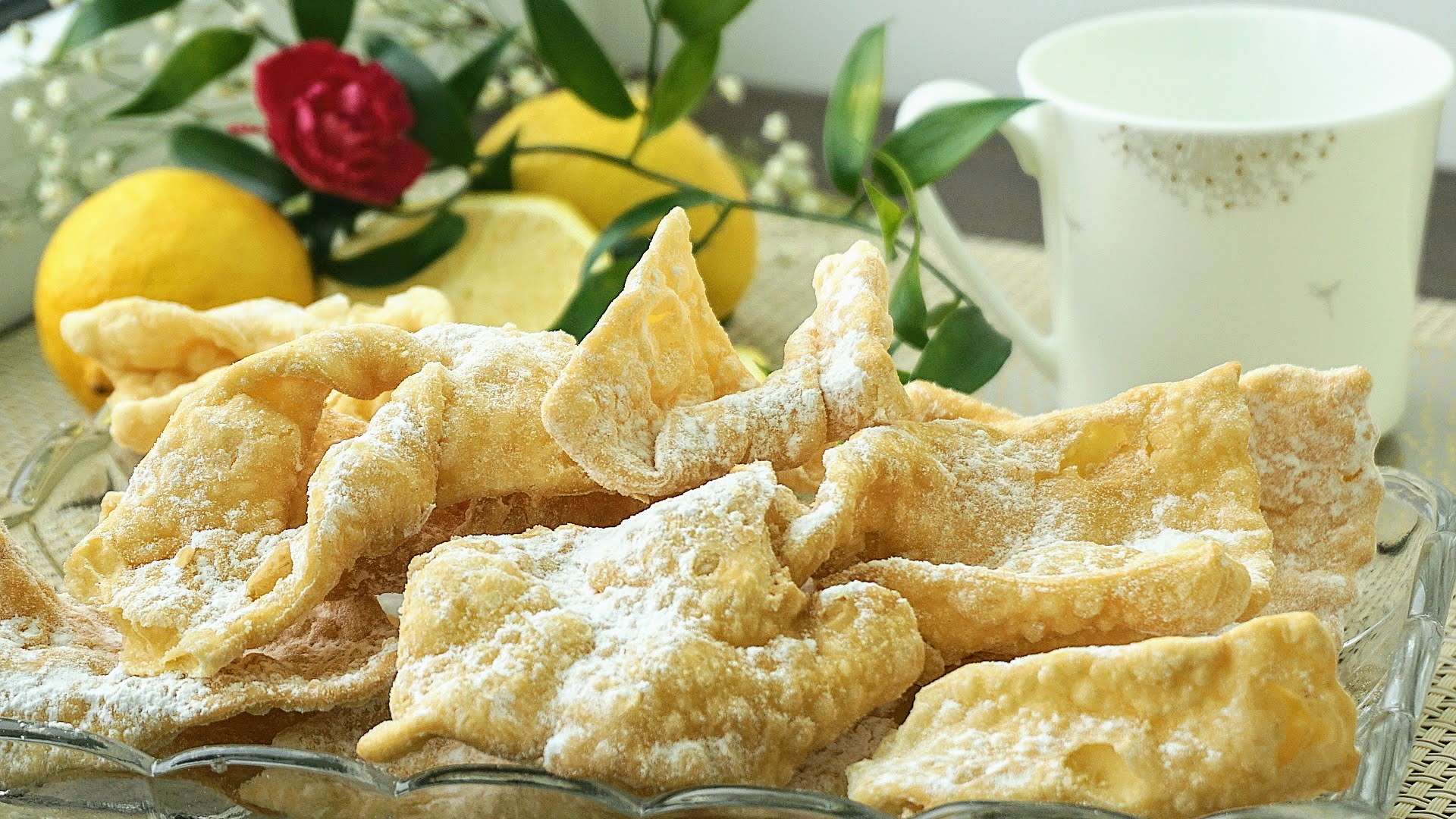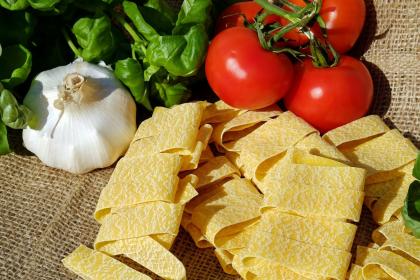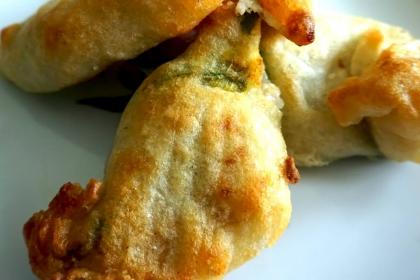
Jokes, fun and a bit of overindulgence
Semel in anno licet insanire: once a year, it is allowed to go crazy as stated by an ancient Latin proverb, traditionally linked to the Roman Carnival, inspired by the ancient Rome Saturnalia, the pagan feast dedicated to the settlement in the temple of the god Saturn and the mythical golden age. The festivities, celebrated for the Winter solstice, were characterized by unbridled fun, lust, sacrifices, dances, jokes, masks and, above all, an abundance of food. Romans used to exchange gifts - candles, nuts, dates and Frictilia. The latter were sweets prepared in large quantities by Roman women and distributed to the people celebrating in the street. They represented an ancient version of our "frappe": they were, in fact, "fritters made from eggs and spelt flour cut into bite-sized pieces, fried in lard and then dipped in honey", as reported in the De re coquinaria by Apicius, Roman cook and writer who lived between the 1st century BC and the 1st century AD.
Fried, what a passion!
The typical exuberant Carnival atmosphere lasted throughout the Middle Ages (with the ludus carnevalarii in Testaccio and in Agone, the current Piazza Navona) and during the Renaissance in the historic centre. A lively crowd invaded the city: among storytellers, jesters, jousting, races, duels, parade floats and grandiose banquets - the feast of dishes of all kinds, accompanied by large quantities of wine, was guaranteed. In the streets and theatres and on the most refined tables, fried sweets stole the show, probably because of the approaching of Lent, when the consumption of meat was prohibited. From this, it's the origin of the word Carnival: carnem levare, to give up meat.
A long-lasting and delicious tradition
Even today, the Romans do not give up on the sweet "carnival treats": castagnole alla romana, soft little balls of fried dough rolled in sugar; bocconotti, shortcrust pastry filled with ricotta, cinnamon and candied fruit; frappe, crumbly and thin puff pastry, sprinkled with icing sugar. Together with a coffee, as a snack, or at the end of a good meal, they are ideal for sharing a moment of conviviality, easy to prepare at home: fried - according to classic recipes - or baked, in a more "light" version. We suggest you two traditional recipes to enjoy the Carnival festive atmosphere in a strictly Capitoline version!
Castagnole, the irresistible sugar-coated balls
A sweet symbol of the most playful feast of the year, the castagnole reminds, in their shape and shades, of the Autumn fruit par excellence, from which they take their name. They are soft and proposed fried and without filling - in the classic version - stuffed with ricotta, custard and chocolate, or more “light”, cooked in the oven.
Ingredients for 6 people
- 4 eggs
- 400 g of flour
- 50 g of sugar
- 100 g of butter
- 1 small glass of rum
- 1 tablespoon of grated lemon zest
- 100 g of powdered sugar
- oil for frying to taste
- 1 pinch of salt
- 1 pinch of cinnamon
Combine flour, eggs, melted butter, lemon zest and salt in a bowl. Work the dough vigorously until it reaches a specific consistency. With your hands, form balls the size of a chestnut to fry in boiling oil. Once ready, drain the excess oil from the castagnole and let dry on absorbent paper. Sprinkle them with icing sugar mixed with cinnamon and serve hot or cold, depending on your taste.
The descendants of the ancient Roman Frictilia: the frappe
Thin, fragrant, light: fried or baked, you can't eat just one! The real stars of the party, the frappe are often enriched with flavourings - such as vanilla or mandarin - and liqueurs or prepared with a chocolate coating.
Ingredients
- 300 g of flour
- 25 g of butter
- 40 g of sugar
- 1 egg
- 2 yolks
- 1 lemon
- 1 tablespoon of liqueur to taste
- powdered sugar
- frying oil
Sift the flour into a well. Put the flaked butter, sugar, whole egg and egg yolks, liqueur and grated lemon peel in the centre. Knead quickly, then roll out the dough into one or more thin discs. With a pasta cutter, cut into strips about three centimetres wide and seven long from the discs, with the ends cut diagonally. In a pan, heat plenty of seed oil and, when it is hot, fry the frappe (a few at a time), taking them out with a skimmer when they have reached a medium golden colour. Dry them on absorbent paper. Leave cooling and sprinkle generously with icing sugar.














































